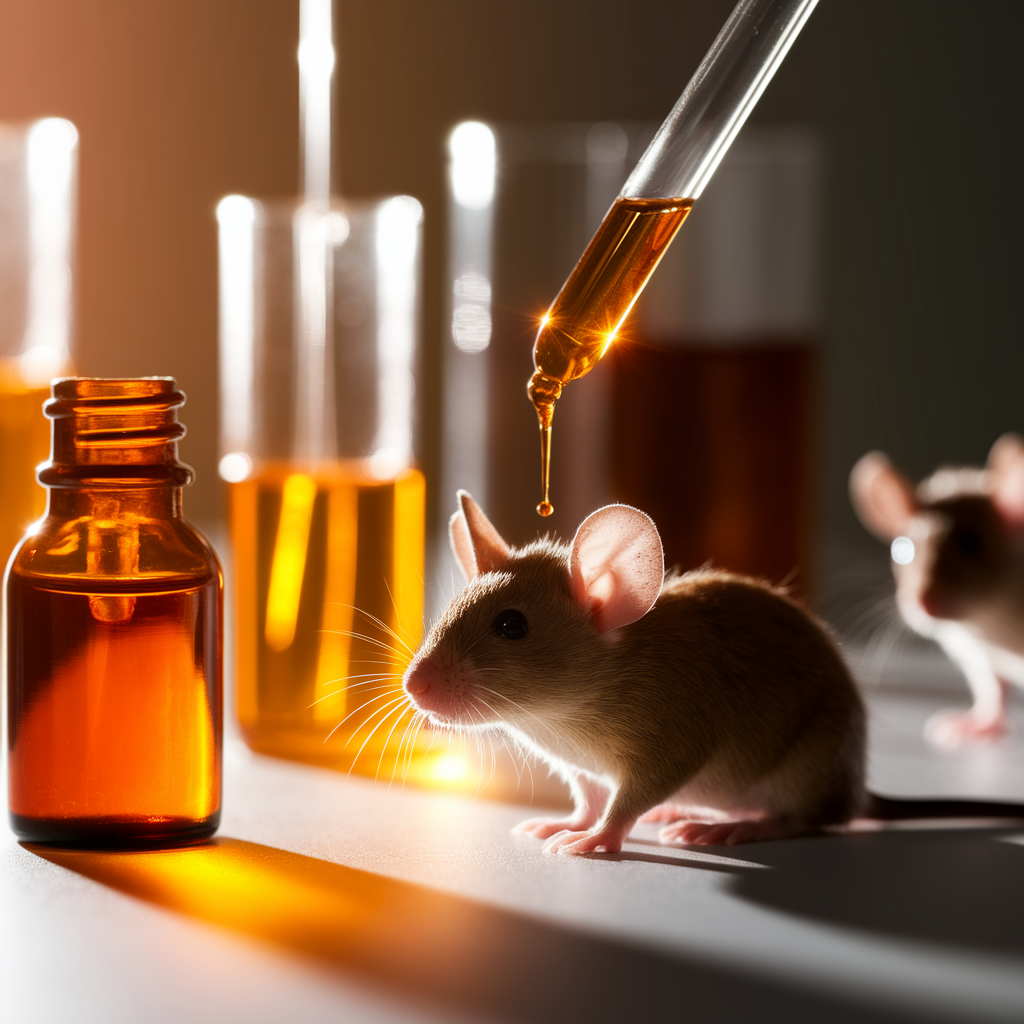Peppermint oil affects mice through multiple pathways, from potentially repelling them through strong odors to influencing their cognitive function and stress responses. This natural extract contains compounds that interact with rodent sensory systems and neural pathways in fascinating ways.
When I first began studying essential oils, peppermint immediately stood out for its versatility. Mentha piperita, commonly known as peppermint, belongs to the Lamiaceae family and contains a rich profile of bioactive compounds. Its distinctive aroma comes from menthol, menthone, and other terpenes that give it both sensory and physiological impacts on rodents.
Research into peppermint’s effects on mice offers valuable insights for both potential therapeutic applications and natural pest control methods. Understanding how mice respond to this powerful plant extract helps us explore humane alternatives to conventional rodent management while uncovering biological mechanisms that might benefit human health.
Peppermint’s Active Compounds

Peppermint oil contains several potent bioactive compounds that create its characteristic cooling sensation and strong aroma. These natural chemicals interact with mice in multiple ways, affecting both their behavior and biology.
The primary active compounds in peppermint include:
- Menthol (30-50%): The dominant compound that activates TRPM8 cold receptors
- Menthone (10-30%): Contributes to the minty aroma and shows antioxidant properties
- Menthyl acetate (5-20%): Enhances the cooling sensation and persistence of effects
- Limonene, pulegone, and pinene: Secondary compounds with additional bioactive properties
These compounds interact with the mouse olfactory system through specialized receptors. Menthol particularly targets the TRPM8 receptor, creating a cooling sensation that mice can find overwhelming due to their highly sensitive smell. This sensory interaction forms the basis for both peppermint’s potential repellent effects and its neurological impacts on rodents.
Chemical Composition of Peppermint
Peppermint’s effectiveness comes from its complex chemical profile. Beyond the major components, peppermint contains dozens of minor compounds that work synergistically. Gas chromatography analysis reveals over 40 different chemicals in typical peppermint essential oil.
The composition varies based on:
- Plant growing conditions
- Harvesting time
- Extraction method
- Storage conditions
This variability explains why different peppermint oil products might show different levels of effectiveness on mice. The most potent oils typically contain higher percentages of menthol and retain more of the volatile compounds that trigger strong rodent responses.
Interaction with Mouse Sensory Systems
Mice experience peppermint much differently than humans do. Their olfactory system contains approximately 1,100 different olfactory receptor genes (compared to about 350 in humans), making them extremely sensitive to smell.
When peppermint compounds enter a mouse’s nasal passages, they:
- Bind to specialized olfactory receptors
- Trigger nerve impulses along the olfactory nerve
- Stimulate processing in the olfactory bulb
- Create responses in multiple brain regions, including the hippocampus and amygdala
This sensory cascade explains why mice react so strongly to peppermint. Research shows that menthol also directly activates the TRPM8 receptor, creating sensations that mice may find unpleasant or overwhelming due to their heightened sensory sensitivity.
Behavioral Effects of Peppermint on Mice
Peppermint oil produces notable changes in mouse behavior through several mechanisms. These behavioral responses range from avoidance reactions to changes in cognitive function and stress behaviors.
Avoidance and Movement Patterns
Mice typically demonstrate avoidance behaviors when exposed to peppermint oil. Research suggests this aversion stems from the intense olfactory stimulation rather than learned negative associations.
Common avoidance behaviors include:
- Reducing time spent in peppermint-scented areas
- Increased grooming behaviors near the facial area
- Changes in exploratory patterns and reduced foraging
- Hesitation at entry points treated with peppermint oil
However, the repellent effect may diminish over time. According to a critical analysis of peppermint oil’s effectiveness, there’s limited evidence for long-term deterrence, as mice may acclimate to the scent if no negative consequences reinforce the avoidance.
Learning and Memory Effects
Surprisingly, peppermint appears to enhance certain cognitive functions in mice. Research published in PubMed found that peppermint essential oil improved spatial learning and memory retention in mice modeling Alzheimer’s disease (APP/PS1 transgenic mice).
The study demonstrated:
- Improved performance in Morris water maze tests
- Enhanced memory retention
- 32% reduction in hippocampal amyloid-beta plaques
- Modulation of arginine-proline metabolism pathways
These cognitive benefits may relate to peppermint’s ability to increase brain-derived neurotrophic factor (BDNF) levels in the hippocampus, supporting neural plasticity and memory formation.
Stress and Anxiety Responses
Peppermint oil exposure influences stress and anxiety-related behaviors in mice. The mechanisms appear linked to GABA modulation and other neurochemical pathways.
Studies show that mice exposed to peppermint oil often display:
- Reduced anxiety-like behaviors in elevated plus maze tests
- Decreased stress-related freezing behaviors
- Altered corticosterone release patterns
- Changes in autonomic nervous system responses
These effects align with human research showing peppermint reduces anxiety and improves cognitive performance under stress, suggesting conserved mechanisms across species.
Physiological Responses of Mice to Peppermint
Peppermint oil creates multiple physiological changes in mice beyond observable behaviors. These internal responses offer insights into both potential therapeutic applications and safety considerations.
Neurological Effects
Peppermint compounds cross the blood-brain barrier in mice, directly affecting neural function. Research demonstrates several important neurological impacts:
- Activation of specific brain regions including the hippocampus and amygdala
- Modulation of neurotransmitter systems, particularly GABA pathways
- PPARγ activation supporting amyloid clearance in brain tissue
- Increased BDNF expression supporting neuronal health
These neurological effects help explain the cognitive improvements observed in Alzheimer’s-model mice, where peppermint exposure improved memory performance and reduced pathological markers.
Oxidative Stress and Metabolic Changes
Peppermint significantly affects oxidative stress markers in mouse tissues. Research shows powerful antioxidant effects with relevance to multiple health conditions.
Key findings include:
- 27% decrease in brain malondialdehyde (MDA), a lipid peroxidation marker
- Normalization of SOD/GSH-PX antioxidant enzymes with 40% increased activity
- Protection against stress-induced liver enzyme alterations
These antioxidant properties appear particularly strong during stress conditions. According to research in the Open Biochemistry Journal, peppermint oil reduces lipid peroxidation and protects against liver enzyme alterations during immobilization stress in mice.
Respiratory and Cardiovascular Responses
Peppermint oil exposure creates notable effects on mouse respiratory and cardiovascular systems:
- Bronchodilation and increased respiratory rate during initial exposure
- Altered heart rate variability, indicating autonomic nervous system effects
- Peripheral vasodilation producing slight changes in body temperature
- Decreased systolic blood pressure in some studies
The respiratory effects appear dose-dependent, with higher concentrations potentially causing irritation. Effective cognitive enhancement occurs at 0.5-2% inhalation exposure levels, while concentrations above 5% may cause mucosal irritation in mice.
Potential Applications in Pest Control
Peppermint oil has gained attention as a potential natural mouse repellent, though its effectiveness remains debated. Understanding the evidence helps determine where and how it might be useful in pest management strategies.
Effectiveness as a Repellent
In controlled studies, peppermint oil’s repellent properties show mixed results. While mice initially avoid peppermint-scented areas, several limitations affect its practical use.
Key findings on effectiveness include:
- Short-term olfactory aversion occurs through TRPM8 receptor activation
- No controlled studies prove long-term deterrence effects
- Rapid evaporation requires frequent reapplication (typically every 2-3 days)
- Environmental factors like humidity and temperature affect potency
As noted in a critical analysis of peppermint oil for mouse control, the lack of robust evidence for sustained repellent effects limits its reliability as a standalone solution for serious infestations.
Comparison with Traditional Methods
Peppermint-based repellents offer both advantages and disadvantages compared to conventional rodenticides and traps.
| Method | Pros | Cons |
|---|---|---|
| Peppermint Oil | • Non-toxic to humans and pets • No harmful residues • Pleasant aroma for humans • Easy application | • Requires frequent reapplication • Limited evidence for effectiveness • Not suitable for large infestations • Variable quality between products |
| Chemical Rodenticides | • Proven effectiveness • Long-lasting action • Works for large infestations • Less maintenance | • Toxic to children and pets • Environmental concerns • Secondary poisoning risk • Potential for resistant populations |
| Mechanical Traps | • No chemicals required • Verifiable results • One-time purchase • Different humane options | • Limited coverage area • Requires proper placement • Regular checking needed • Some find disposal unpleasant |
This comparison highlights why peppermint oil works best as a complementary approach rather than a complete replacement for traditional methods in serious mouse infestations.
Practical Applications and Limitations
Several practical considerations improve the potential effectiveness of peppermint oil as part of a mouse management strategy.
Best practices include:
- Applying oil to cotton balls placed at entry points and along suspected mouse pathways
- Reapplying every 2-3 days to maintain potency
- Using higher quality oils with verified menthol content (typically above 35%)
- Combining with proper sanitation and exclusion methods
- Addressing entry points with steel wool or caulk alongside peppermint application
Limitations to consider include the oil’s ineffectiveness against existing nests, its reduced potency in high-airflow areas, and potential interference with tracking powders used to identify mouse pathways.
Ethical Considerations and Future Research Directions
Research on peppermint’s effects on mice raises important ethical questions while also opening promising avenues for future investigation in both pest management and therapeutic applications.
Animal Welfare Considerations
Studying peppermint’s effects on mice requires ethical approaches that balance research needs with animal welfare. Key considerations include:
- Using the minimum number of animals needed for statistical validity
- Employing refinement techniques to reduce potential distress
- Ensuring humane endpoints in all experimental protocols
- Considering non-animal alternatives when possible for preliminary screening
For pest control applications, peppermint oil represents a potentially more humane approach than lethal methods, though questions remain about whether creating strong aversive environments constitutes a welfare concern for resident mouse populations.
Research Gaps and Opportunities
Several important knowledge gaps remain in understanding peppermint’s full effects on mice:
- Long-term neurological impacts of chronic low-level exposure
- Potential development of tolerance to repellent effects
- Transgenerational effects on offspring of exposed mice
- Complete molecular pathways for cognitive enhancement effects
- Standardization of peppermint preparations for consistent results
Future research directions that show particular promise include investigating peppermint compounds as models for new cognitive enhancers, exploring combination approaches for pest management, and developing controlled-release formulations to overcome the evaporation limitation.
Collaborative Research Approaches

Addressing these complex questions requires multidisciplinary collaboration between:
- Neuroscientists studying mechanism pathways
- Ethologists examining natural mouse behavior
- Pest management professionals testing field applications
- Chemists developing stable formulations
- Regulatory experts ensuring safety guidelines
Standardized testing protocols would benefit collaborative approaches by enabling direct comparison between studies and accelerating practical applications in therapeutic contexts and humane pest management strategies.
Conclusion
Peppermint oil affects mice through multiple biological pathways, from sensory repulsion to cognitive enhancement and stress reduction. Its complex effects highlight the fascinating interplay between plant compounds and mammalian biology.
The research reveals peppermint’s dual nature: while it may deter mice through overwhelming sensory input, it also shows potential neuroprotective benefits through antioxidant activity and metabolism modulation. These findings open possibilities for both natural pest management and therapeutic applications.
If you’re considering peppermint oil for mouse control, understand its limitations—frequent application is necessary, and it works best as part of a comprehensive approach rather than a standalone solution. For best results, use high-quality oils at appropriate concentrations (0.5-2%) and combine with proper exclusion methods.
The relationship between peppermint and mice continues to yield surprising discoveries, reminding us that even familiar plants contain complex biochemistry with far-reaching effects on the nervous system, behavior, and physiology of mammals.













